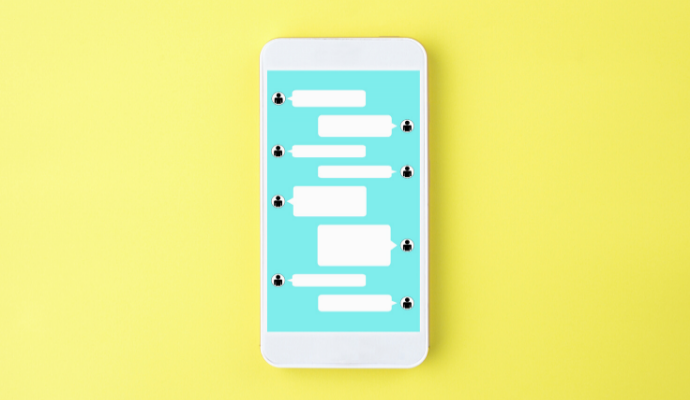Text Message-Based mHealth Intervention More Effective Later in Day
New research reveals that while a text-based CBT intervention was effective in addressing mental health symptoms, the time messages were sent impacted mood ratings.

Source: Getty Images
- On examining a text messaging-based mHealth intervention, researchers found messages delivered in the afternoon or evening improved mood among people with depression and anxiety symptoms more significantly than messages sent in the morning.
These results come from a recent study published in PLOS Digital Health that aimed to assess the efficacy of different components of a 60-day text messaging program based on cognitive behavioral therapy (CBT).
Called the StayWell at Home intervention, the program was developed by the University of California Berkeley investigators at the onset of the COVID-19 pandemic. The team implemented the intervention through two independent trials, which indicated that participants experienced significant reductions in depressive and anxiety symptoms after the program.
In a new analysis, University of California Berkeley researchers aimed to examine mood ratings throughout the intervention. They studied two components of the StayWell at Home program to understand the action mechanisms that improve mood: text messages delivering CBT-informed coping strategies and the time at which messages were sent. They used data collected during the first two independent trials of the intervention. The first trial included 303 adults, and the second included 266 adults.
The study shows no significant differences between the impact of the two text message types — behavioral activation and other coping skills — on mood ratings, “indicating all may be equally important to achieving improvement.”
However, researchers observed that delivering either message type in the late afternoon, within the 3 pm to 6 pm timeframe, significantly improved mood compared to sending a message in the 9 am to 12 pm window.
“There is evidence to suggest that as people go about their day, they accumulate greater stress and deplete their daily resources needed to cope with stress; thus, it may be that the delivery of a message in the afternoon was received better by participants and thus had a more immediate benefit/effect on mood,” the researchers wrote.
Further, they found that increases in mood ratings appeared more pronounced during the first two to three weeks of the text messaging program and were maintained for the remainder of the study period.
Thus, researchers concluded that “it is crucial to continue developing and testing the efficacy of interventions, such as StayWell at Home, which have the potential for widespread dissemination and reach, given the low-intensity format of delivering two text messages daily.”
Amid growing demand for mHealth interventions, research on these tools and their components is increasing.
A study published last December showed that certain factors impact the efficacy of mHealth applications targeting moderate and severe depression, like in-app notifications and the length of treatment delivery.
Researchers identified randomized clinical trials (RCTs) evaluating mHealth apps that treat adults with moderate to severe depression within the PubMed, Embase, and PsycINFO databases from their inception to January 22, 2023. They included 13 studies evaluating 16 intervention apps with 1,470 participants in the analysis.
Overall, mHealth app interventions were linked to significantly reduced depressive symptoms. The researchers also found interventions delivered for less than eight weeks and those with in-app notifications were associated with greater treatment efficacy than those delivered for eight weeks or longer and without notifications.
This research is critical, informing strategies to mitigate the ongoing mental health epidemic in America.
Mental health practitioners report the demand for mental healthcare services skyrocketed during the pandemic, with half (46 percent) saying they have been unable to meet the demand for treatment, according to the 2022 COVID-19 Practitioner Impact Survey.
Conducted by the American Psychological Association, the survey polled 2,295 psychologists from September 20 to October 7, 2022.
The survey further revealed that 79 percent of psychologists had seen an increase in the number of patients with anxiety disorders since the beginning of the pandemic, 66 percent saw a rise in demand for treatment for depression, and 47 percent saw an increase in demand for substance use treatment.
